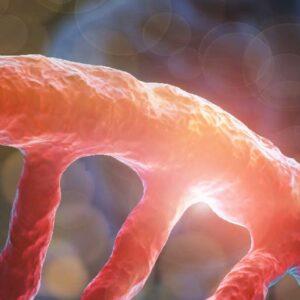Scientific Background
Classic Rett syndrome is an X-linked dominant neurodegenerative disease (frequency 1:10,000) that occurs predominantly in females. In the classic course, children develop normally until between the age of 6 and 18 months, after which time they lose acquired abilities, especially meaningful hand functions, linguistic skills and social interaction. The development of stereotypical hand movements is a leading symptom. Other symptoms are delayed growth, microcephaly, gait ataxia, episodes of apnea or hyperpnea, sleep disturbances, increasing scoliosis and seizures. The few male patients predominantly show severe neonatal encephalopathy. Classic Rett syndrome is caused by pathogenic variants in the MECP2 gene. Non-classical, atypical forms of Rett syndrome with early-onset seizures may be caused by pathogenic variants in the CDKL5 gene.
Pathogenic variants in the FOXG1 gene have been described in both classic and atypical forms of Rett syndrome and show a very high clinical heterogeneity. In recent years, several other genes have been discovered in which pathogenic variants have been described that can lead to Rett syndrome-like clinical pictures or disease courses. In patients with Rett syndrome-like diseases, NGS panel diagnostics may therefore be recommended. In individual cases, this can lead to a diagnosis and thus to more precise statements on the prognosis and the risk of recurrence.
References
Schonewolf-Greulich et al. 2019 Clin Genet 95:221 / Vidal et al. 2019 Eur J Paediatr Neurol / Allou et al. 2016, Clin Genet 91:431 / Le Meur et al. 2010, J Med Genet 47:22 / Tran Mau-Them et al. 2014, Eur J Hum Genet 22:289 / Olson et al. 2015, Am J Med Genet A 167:2017
PITT-HOPKINS SYNDROME
Pitt and Hopkins first described two patients with a developmental disorder, similar appearance and hyperventilation seizures in 1978. From 2007, microdeletions in the 18q21.2 region and then pathogenic variants in TCF4 were reported to cause Pitt-Hopkins syndrome (PTHS).
The following external features are characteristic and become more pronounced with age: deep-set eyes slanting slightly upward and outward, prominent nasal root, slightly curved nasal bridge and flattened nasal tip, flared nostrils, short philtrum, and a prominent chin. Fetal fingertip pads are often present.
Muscle hypotonia is seen in the first year of life and most children are described as quiet during this period. A severe global developmental disorder is usually present. On average, affected children learn to walk between the ages of 3 and 4. Speech development is severely impaired or absent with many affected individuals knowing only a few words. Their mood is usually described as cheerful. Repetitive hand movements such as waving or clapping are frequently observed. About 60% have episodes of hyperventilation and/or apnea while awake that are not related to epileptic activity and almost half of the patients have epilepsy. Severe congenital malformations are rare, and chronic constipation is often present. Growth is usually unaffected, and about one-third develop microcephaly. MRI may reveal a corpus callosum deficiency and ventricular dilation. Half of the children have myopia or strabismus.
Differential diagnoses include Angelman syndrome and Mowat-Wilson syndrome as well as Rett syndrome and Joubert syndrome.
The prevalence has been estimated at 1:11,000; however, PTHS is probably underdiagnosed.
The disorder is caused by haploinsufficiency of the TCF4 gene in 18q21.2 due to pathogenic variants (approximately 70%) and deletions (approximately 30%). The TCF4 gene has 20 exons, 18 of which are protein-coding (2-19). The TCF4 protein is a transcription factor that is highly expressed in embryonic development, including in the CNS.
As pathogenic variants and deletions in TCF4 usually occur de novo, the recurrence risk for siblings is low unless a somatic or germ cell mosaic has been detected in one parent.
References
Goodspeed et al. 2018, J Child Neurol 33:233 / Whalen et al. 2012, Hum Mut 33:64 / Ardinger et al. 2012, GeneReviews™ / Marangi et al. 2011, Am J Med Genet 155A:1536 / Amiel et al. 2007, Am J Hum Genet 80:988 / Zweier et al. 2007, Am J Hum Genet 80:994





















